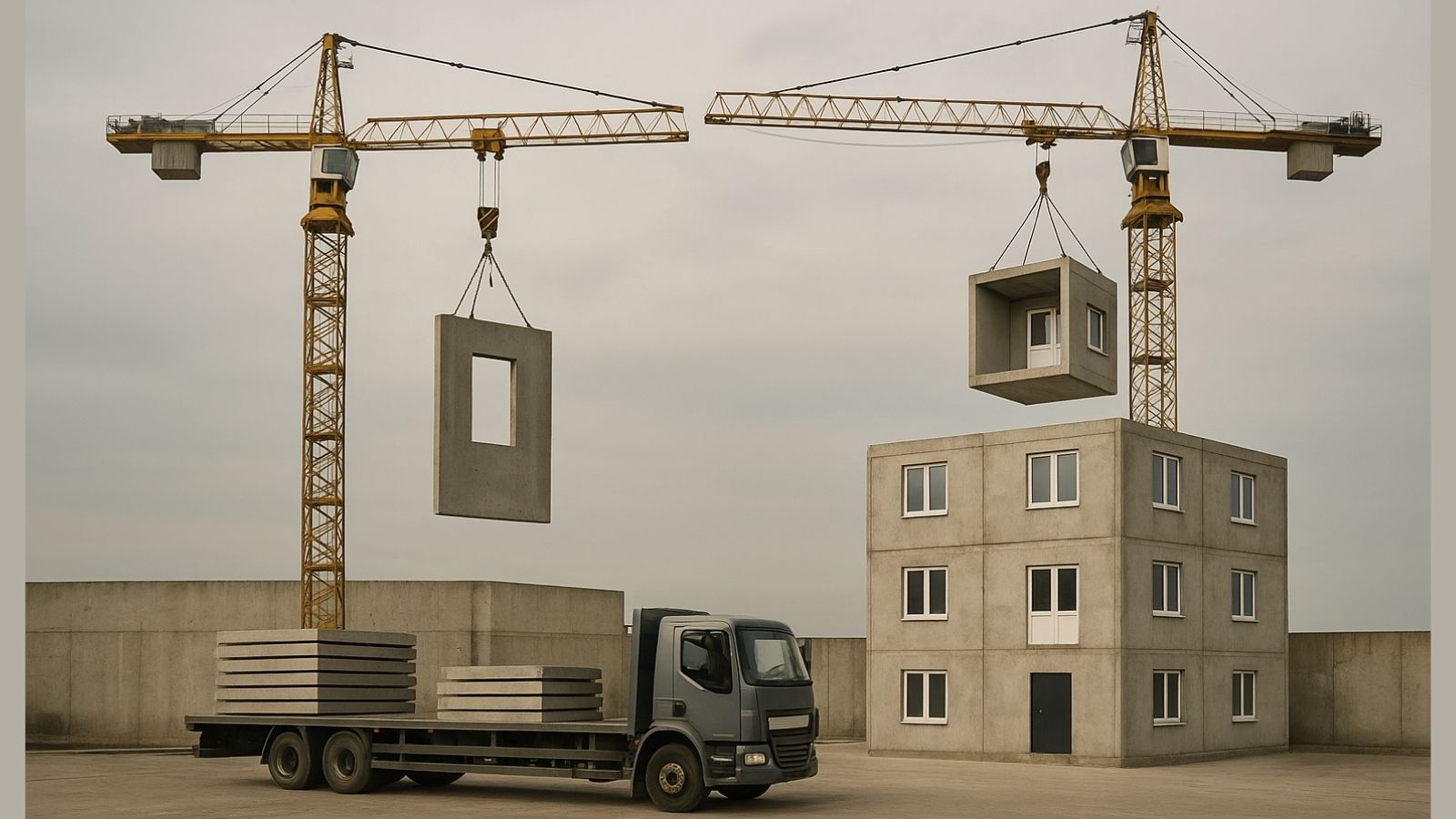Let’s Clear This Up Once and For All
If you're in the construction world or even just planning your next build you’ve probably heard the words prefabrication and modular tossed around like they're the same thing.
Spoiler: They’re not.
And if you’re trying to make the smartest, most cost-effective decision for your project, knowing the difference isn’t just helpful, it’s essential.
At Northgate Industries, we live and breathe this stuff. So, we’re here to make it easy, clear, and maybe even a little interesting. (Yes, we said it. Construction blogs can be interesting.)
What Is Prefabrication?
Prefabrication is often shortened to prefab is a construction method where specific building components are built off-site in a controlled environment, then delivered to the jobsite for final assembly.
Think of it like ordering furniture from IKEA. You get all the parts packed and labeled and then put them together when they arrive.
Common examples of prefab components:
- Wall panels
- Floor systems
- Precast concrete sections
- Roof trusses
- Electrical or plumbing systems
Prefab gives you more control, faster timelines, and less waste than traditional on-site construction. But here’s the catch: you still need to assemble it all on-site.
What Is Modular Construction?
Modular construction takes prefabrication to the next level.
Instead of just individual parts, you're building entire sections of a building called modules, off-site. These modules come complete with walls, flooring, wiring, plumbing, windows, finishes, and more.
Then? They're transported to the building site and stacked or connected into a complete structure. Picture it like Lego blocks but way more sophisticated (and functional).
Result: faster builds, reduced weather delays, and much less disruption on-site.
Modular buildings are used for:
- Jobsite offices
- Workforce housing
- Schools
- Commercial spaces
- Remote camps
- And more
Prefabrication vs. Modular Construction: The Real Difference
The key difference? Scope.
- Prefabrication = parts and components
- Modular construction = whole sections or rooms
Both are done off-site. Both save time and money. But how much is done before it arrives at your job site is what really separates the two.
Let’s break it down further.
Characteristics of Prefabrication:
- Produces specific parts, not whole units
- Requires more on-site labor and coordination
- Ideal for hybrid builds that combine traditional and modern methods
- Offers more customization for unique builds
Characteristics of Modular Construction:
- Builds entire building modules off-site
- Minimizes on-site work and labor
- Reduces exposure to weather delays
- Speeds delivery and installation timelines
- Best for repeatable, scalable designs
Why This Difference Actually Matters
Okay, so now you know the difference. But why should you care?
Because the method you choose can dramatically affect your timeline, budget, design process, and environmental impact.
Let’s look at the real-world implications.
1. Timeline
Modular construction often wins here. While the site is being prepped, the modules are already being built. The two processes run in parallel, shaving weeks—or even months—off your timeline.
Prefab components also reduce time on-site, but the assembly process tends to be more hands-on.
2. Cost
Modular buildings are typically more cost-effective for full-scale projects.
You save on:
- Labour
- Site delays
- Equipment rental
- Weather-related slowdowns
Prefab can also cut costs, especially in large or repetitive builds—but may not have the same economy of scale as modular when building entire facilities.
3. Design Flexibility
Prefab gives architects and builders freedom to design unique spaces using prefabricated parts custom walls, roof structures, and utility systems.
Modular has come a long way, too. While once known for cookie-cutter layouts, today’s modular buildings are modern, sleek, and surprisingly flexible, especially when working with a provider like Northgate.
4. Sustainability
Both methods are more sustainable than traditional construction.
Because much of the work happens in a controlled environment:
- There’s less waste
- Materials are optimized
- Energy usage is reduced
Modular often edges out prefab in this area because entire units can be reused, repurposed, or even relocated with minimal effort.
When to Use Each Method
Still wondering which route is best for your project.
Here’s a cheat sheet:
Use Prefabrication When:
- You want to accelerate a traditional build
- You need maximum control over design and materials
- You only need certain components (not full buildings)
- You're working with an existing structure and want to upgrade it
Use Modular Construction When:
- You’re on a tight timeline
- Your site is remote or hard to access
- You want scalability or repeatability
- You need turn-key solutions with minimal on-site work
At Northgate, we help clients figure this out every day. Some projects need prefab, some need modular, and some need a custom blend of both.
Final Thoughts: It’s Not Either/Or, It’s What Works for You
Prefabrication and modular construction aren’t just buzzwords. They’re powerful tools that can transform the way we build faster, cleaner, and smarter.
Whether you're planning a 50-person camp, a mobile office, or a large-scale facility, the right solution starts with understanding the options.
And that’s where we come in.
🔧 Need Expert Advice?
At Northgate Industries, we’ve been leading the way in modular and prefabricated building solutions for decades. If you're still unsure what makes the most sense for your project, we’ll walk you through it, no pressure, no jargon.
Ready to get started? Contact us today.




